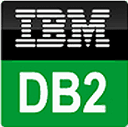Easily integrate iOS SDK with Amazon Kinesis using RudderStack
RudderStack’s open source iOS SDK integration allows you to integrate RudderStack with your undefined to track event data and automatically send it to Amazon Kinesis. With the RudderStack iOS SDK integration, you do not have to worry about having to learn, test, implement or deal with changes in a new API and multiple endpoints every time someone asks for a new integration.
Popular ways to use Amazon Kinesis and RudderStack
Stream behavioral data
Easily stream data from your website or app to Amazon Kinesis in real-time.
Customize data payloads
Modify payloads to match requirements in Amazon Kinesis.
Connect your pipelines
Automatically send user behavior data directly to Amazon Kinesis.
FAQs
How do you integrate your iOS app with Amazon Kinesis?
Is it expensive to integrate iOS SDK with Amazon Kinesis?
How long does it take to integrate iOS SDK with Amazon Kinesis?
Do more with integration combinations
RudderStack empowers you to work with all of your data sources and destinations inside of a single app












